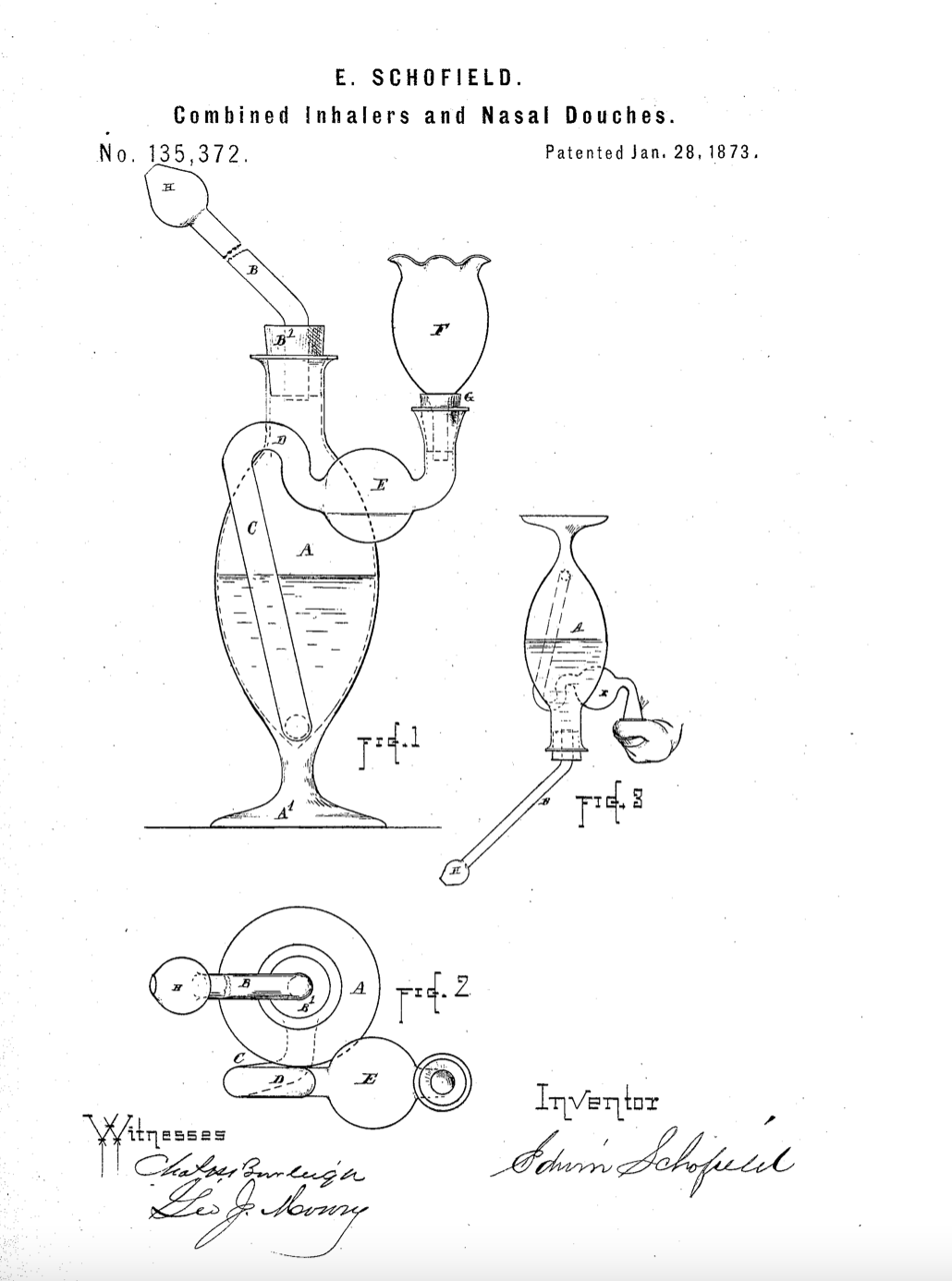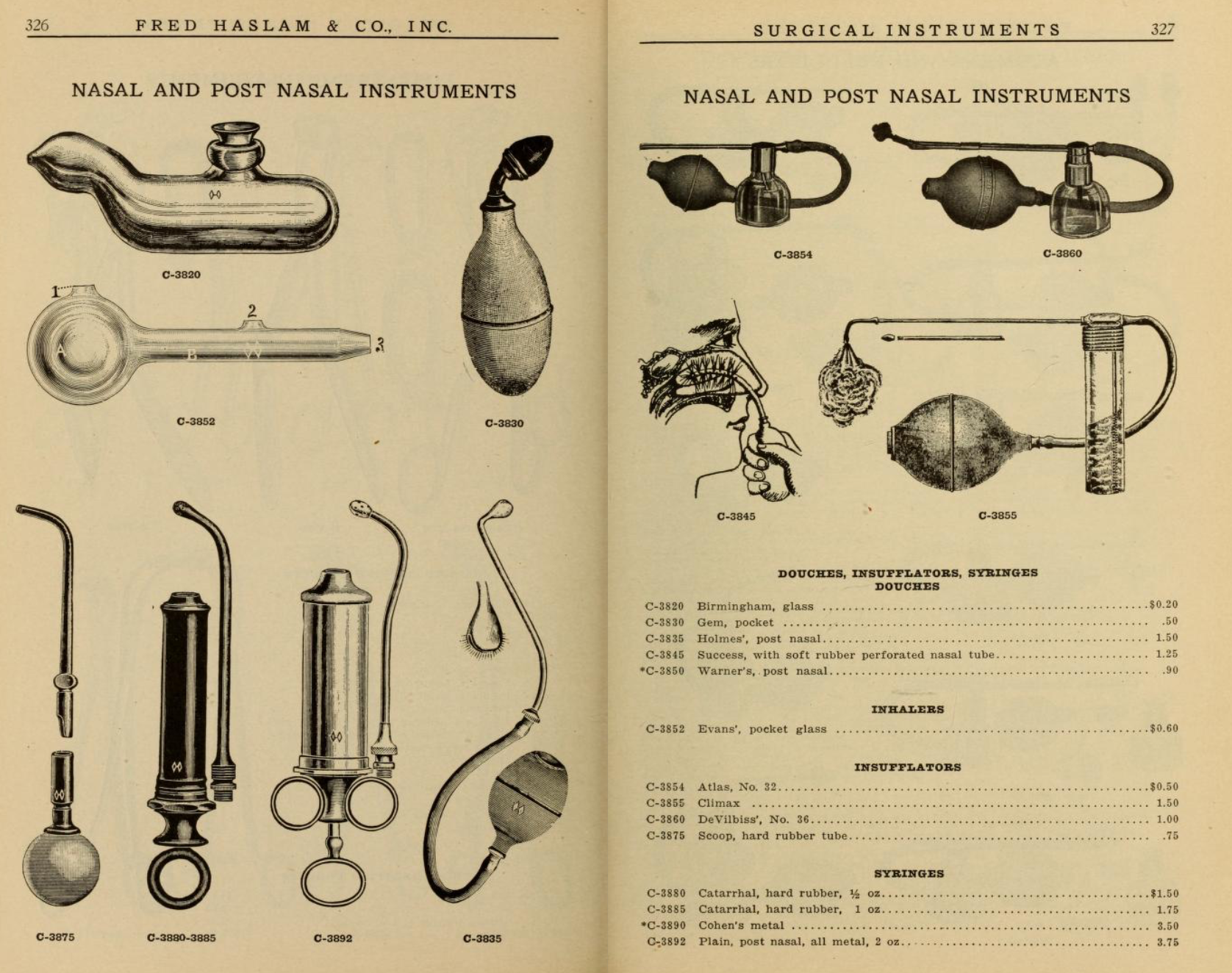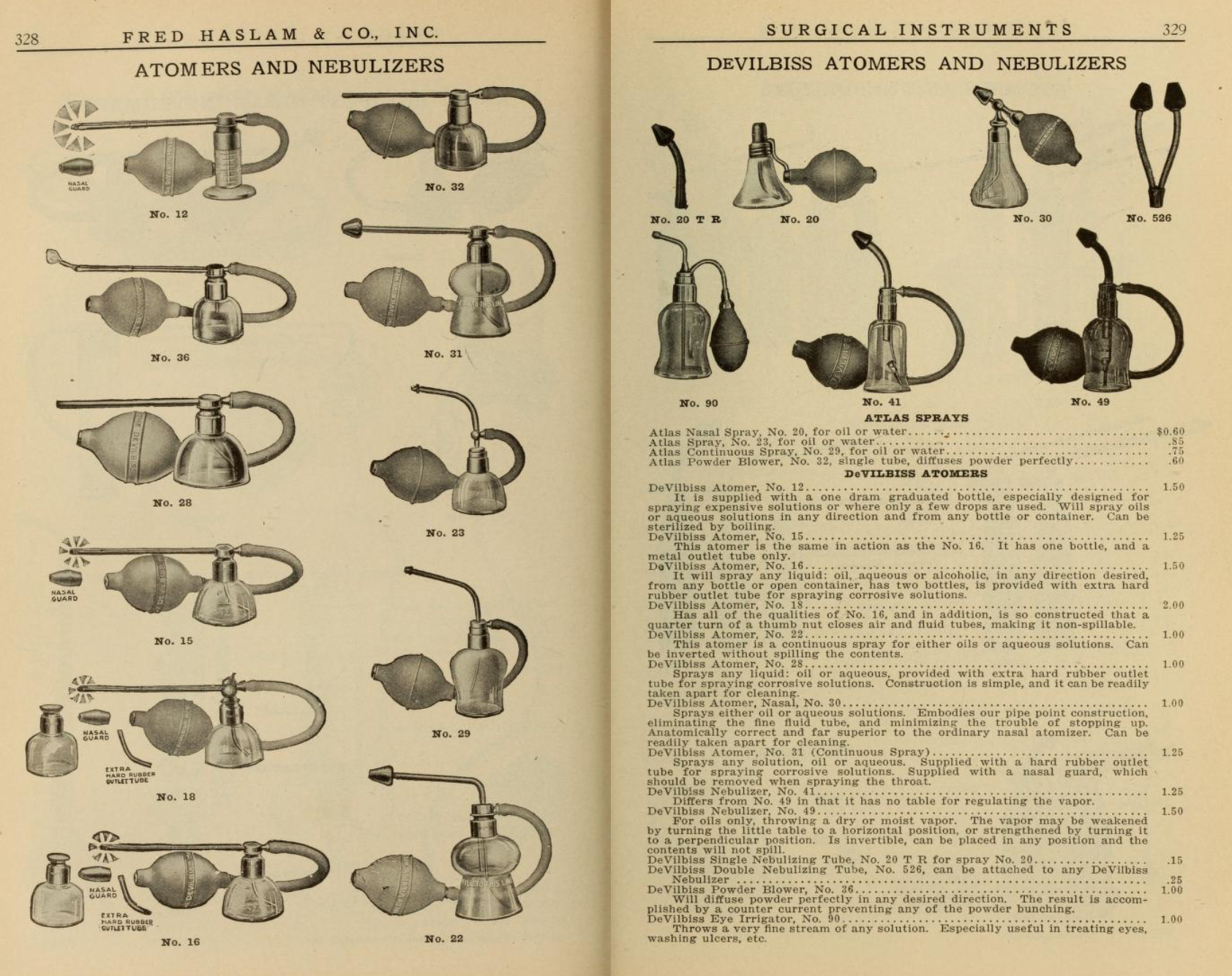
Approaching the first item, in the current Unfamiliar exhibition, it is strangely hard to locate within the case. So small, it could easily fit into the palm of your hand. Yet, behind it, on the wall hangs a bold, eye-catching photograph of this very same item. This image oozes mystery: its smoky purple background opens the object up to fresh interpretation. Perhaps it is a potion bottle, or some kind of sophisticated syphoning device? Is it made of glass? Or is there an ethereal blue light emanating from it?
I have regularly watched people look from the item in the case, to the picture on the wall, trying to piece together how one tiny, seemingly irrelevant object can demand so much more intrigue when captured in Theo’s photograph. Most people cannot even see the petite glass syphon inside the object. The two most frequent questions that visitors to our exhibition have asked about this object, labelled ‘Syphoned nasal inhaler’, is: how exactly was it used? and What would have been inside it?
To answer these questions, I took a closer look at similar glass medical objects created at the same time. I quickly realised that our object was incredibly unique, for I have still not found an identical object in any of the RCP, or other, museum collections! Roughly a similar shape and size to the Unfamiliar object is a chloroform drop bottle manufactured by Pilling & Son (US). Like our object, it also had two ways of pouring its contents out, a syphon inside, and a chain connecting the two caps.

Suspecting that this object was the same as our bottle, I spoke with the Wood Museum of Anesthesiology in Schaumburg, Illinois, to confirm that our object was, in fact, a type of chloroform bottle. The Wood Museum’s honorary curator, Dr. George Bause informed me that if our object were used for chloroform, it would have likely killed the patient! The slight discrepancy between our object’s two outlets and those of the drop bottle in the Wood Museum made a big difference.
Dr. Bause pointed out that our object’s particularly large bore outlets would make the precision of a single drop, necessary for the chloroform droppers, impossible. ‘Bear in mind’ Dr. Bause advised: ‘chloroform was highly potent, used clinically in under 2% concentration in air or oxygen. It was quite deadly, so chloroform inhalers were highly tapered: a mechanical means for delivering single drops at a time to gauze or other evaporating surfaces.’
After a little more digging, I found a particularly horrifying video from the Wellcome Collection’s archive which demonstrated such chloroform bottles: one drop seemed more than enough! If you would like to know more about the chloroform dropper technique, or if you are interested in how the anaesthetic was administered to patients, you can watch the video from the first half of the 20th century here.
So, if our object was not used to administer anaesthetics to patients, then what was it used for? Since the outlets are much larger, and perhaps even a similar size to a nostril, I considered the possibility of the original label being… correct! From what I can tell, the object is a nasal inhaler, although it may simultaneously be a nasal douche, or atomiser.
This object was created in the United States and gifted to the Royal College of Physicians by Jean Symons via the Cultural Gifts Scheme. I took a look at some of the patent sheets for nasal inhalers from the US. At this time, individuals and companies were making nasal inhalers, not too dissimilar to the

The inhalers and nasal douches of the late 19th and early 20th century were used to clear a person’s sinuses: camphor, menthol, and eucalyptus were amongst some of the aromatic contents contained in these inhalers. One of the inhalers from the US Patent Office, from around the time that our object was created, is patented by Edwin Schofield and displays an intricate inhaler and nasal douche system which includes two large outlets and a syphon. It is likely that our object was used in a similar way to Schofield’s model: one end to aerosolize the liquid and the other to inhale.

I also stumbled upon a wealth of similar drawings to those of Schofield’s patent within an early 20th century surgical book by Fred Haslam & Co, entitled: Illustrated catalogue of surgical instruments (1917). Within the pages of this book, one can find numerous types of nasal inhalers and douches that were available from the late 19th century to the beginning of the 20th century.


Since learning more about this object, it has certainly become more familiar, and thanks to Dr. George Bause we at least know it is not a chloroform drop bottle. It seems only fitting to the exhibition’s title, however, that an exact copy of this object – the first that you approach upon entering the exhibition – cannot yet be matched to an item in any other collection.
Thank you for reading. If you would like to read more about this object and nasal inhalers more generally, then I recommend the 2021 article published in The Journal of Laryngology & Otology (Cambridge University Press) entitled ‘A historical review of the evolution of nasal lavage systems’ here.
Written by Caitlín Rankin-McCabe, PhD candidate, Durham University
